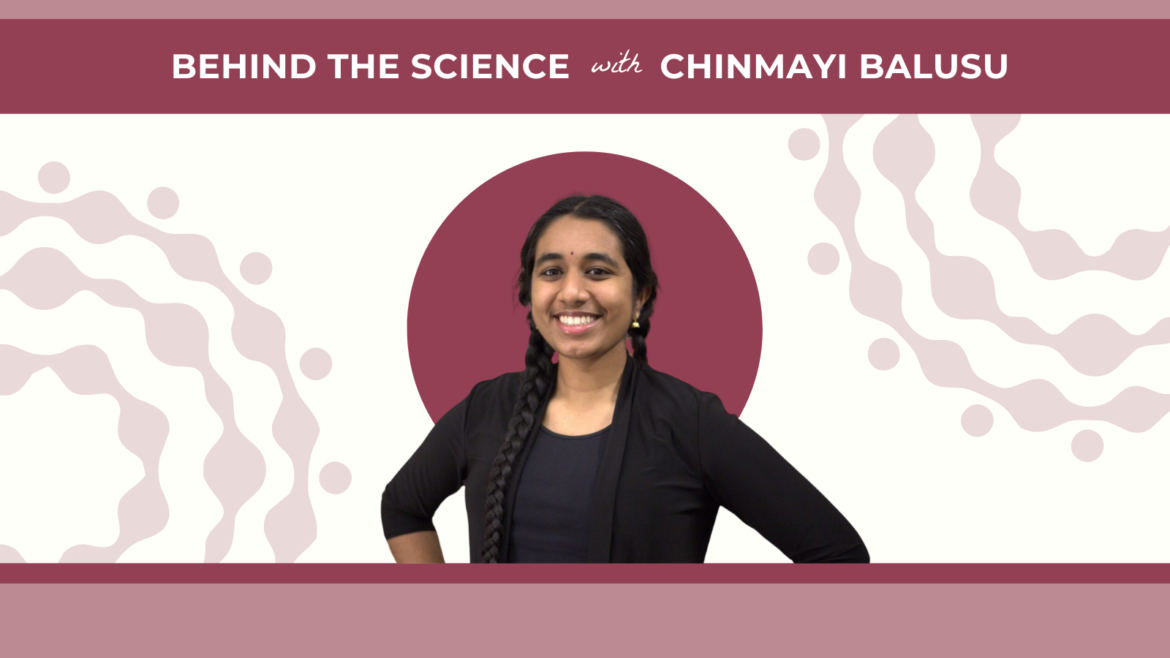Interviewee: Chinmayi Balusu, MPH, Founder of Simply Neuroscience | Authors/Editors: Romina Garcia de leon, Janielle Richards (Blog Co-coordinators)
Published: February 21, 2025
Can you tell us a little bit about your research?
My research has focused on the intersection of medical humanities and neuroscience, with direct ties to neurological conditions such as brain injury, stroke, and Alzheimer’s disease. Coming from a humanities background, I integrated social sciences perspectives to explore how research in healthcare translates into broader society and what that looks like. Specifically, I studied the unique challenges women face related to healthcare—both as patients and as individuals navigating healthcare systems. This included exploring cultural stigmas around sex and gender, and how these affect women’s experiences in medical contexts.
How did you get into this field?
Initially, I was set on pursuing a career in neuroscience, but during college, I realized I didn’t want to focus solely on the life sciences as many scientific issues have broader societal implications. This is what drove me to combine my interests in both humanities and science. I wanted to better understand how these two fields intersect, especially regarding issues like gender, identity, and how to communicate these scientific findings. I also wanted to integrate the social sciences to understand the nuances of human identity and how that impacts the translation of science to the real world, which might be overlooked by utilizing scientific research methods alone.
How did you blend the humanities and sciences?
I was lucky to have access to a Medical Humanities program in college, which allowed me to blend life sciences with social science courses and capstone projects. After college, I pursued a Masters in Public Health with a focus in neuro-epidemiology. Public health was appealing to me because it is rooted in statistics, while also considering community engagement and broader societal factors such as women’s health. This combination of research areas, along with my work on neuroethics and interdisciplinary projects, helped me bring together the humanities and sciences. My public health studies further emphasized how important it is to understand cultural and social contexts that shape healthcare experiences of both individuals and communities.
Where do you see your research and career heading?
In the future, I hope to continue working on projects that emphasize the importance of diverse perspectives in medical research, especially focusing on women’s health as it is an understudied area. I want to make sure that cultural and gender-specific factors are considered at all steps of the scientific research process. My goal is to serve as a connector between the scientific and humanities communities, which could entail roles in research leadership, grant-making, and social impact initiatives that promote interdisciplinary approaches to health challenges. I also aim to expand these conversations globally, particularly in regions where women’s health issues are under-researched, such as in the Global South.
Are there any findings from your projects you’d like to highlight?
One project that I would like to highlight is my past work on understanding the relationship between intimate partner violence (IPV) and brain injuries, particularly in the context of the COVID-19 pandemic. Unfortunately, during the pandemic lockdowns, many individuals–especially women in abusive relationships–faced intensified violence. Brain injuries caused by IPV often go unnoticed, and there is significant stigma surrounding partner abuse, which can make it difficult for women to come forward to seek help. My research highlighted how IPV and its neurological effects became a hidden “epidemic,” exacerbated by the pandemic’s isolation. These issues were rarely noted in popular media outlets and continue to be heavily stigmatized.
Another project I worked on looked at Alzheimer’s Disease-related caregiving in India. In many cultural communities in the Indian subcontinent and beyond, the caregiving burden for family members with illnesses like Alzheimer’s falls primarily on women relatives. I examined the challenges that women face as caregivers—often taking care of both aging parents or in-laws while also caring for their own children. Intergenerational caregiving is often the norm in many communities, and these “sandwich caregivers” experience mental and physical strain, yet their experiences are rarely addressed in traditional Alzheimer’s research. I wanted to understand how women navigate these experiences and what the ripple effects of carrying those responsibilities were.
How do these projects fit into the broader themes of your work?
Both projects highlighted how cultural and gender factors influence health outcomes, especially in under-researched areas like women’s caregiving roles and the intersection of IPV and neurological health. These findings show how essential it is to integrate cultural contexts and social science research into medical studies. I’m committed to exploring these intersections further to ensure that health policies and research better reflect the lived realities of women and marginalized groups.
Where can people read more about your work?


